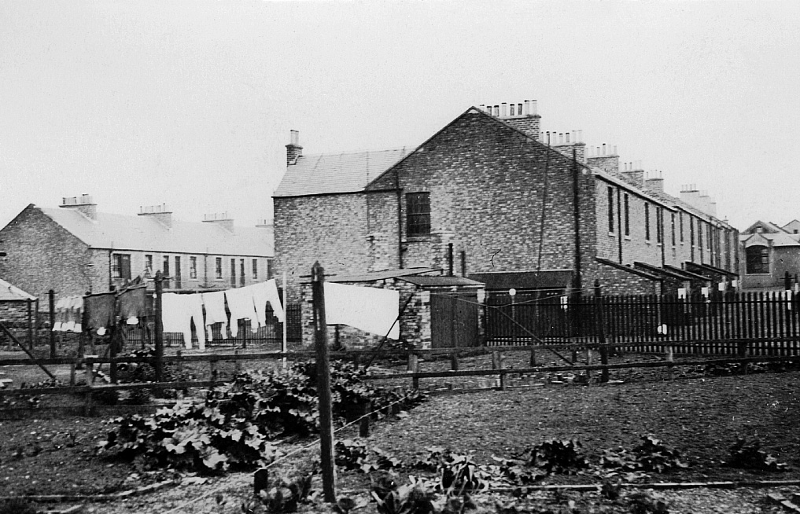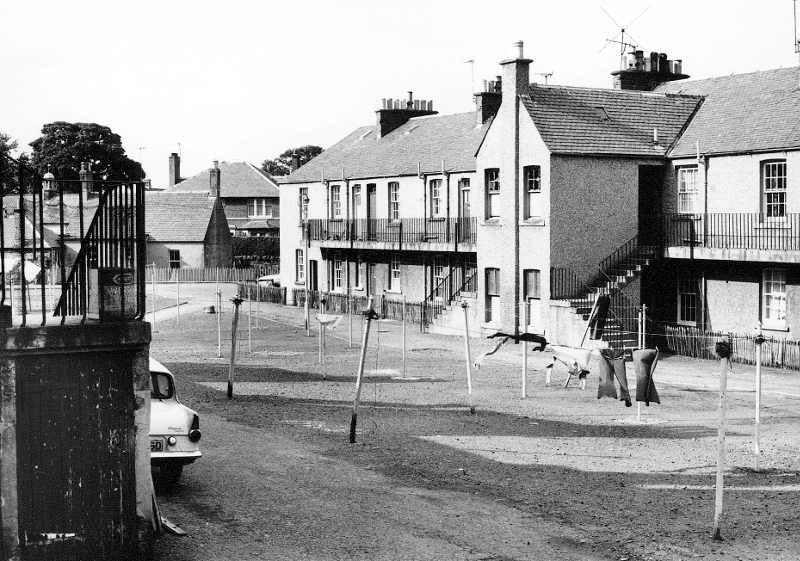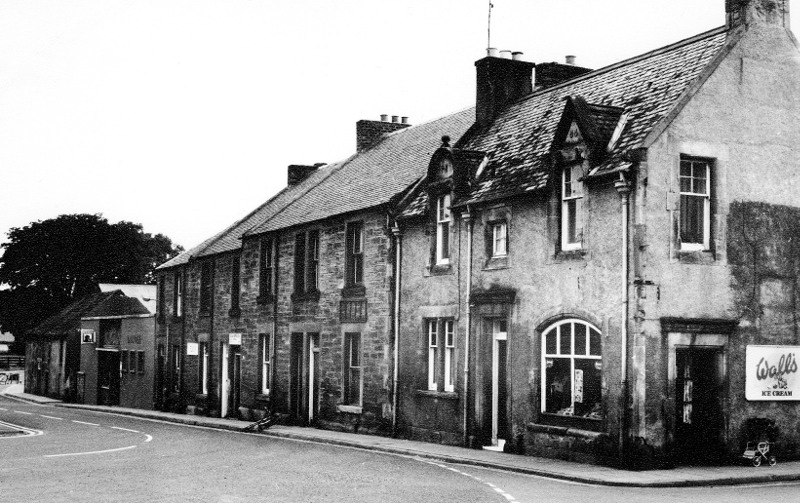The village has seen many changes over the period. Although only one house seems to have been demolished – at the Main Street / High Street junction, many more have been built. A brief overview is given below.
In 1954, Fawn’s Park was converted from a house to a joiner’s workshop; it was converted back into a house in 1990. In the High Street, Duncan’s shop (Aggie Harrower’s), and the old Sydey’s building were converted to houses. The Co-op chemist at Limeylands Road / George Street was converted back into a house in the 1980s; the Coal Board offices in the same area were converted to houses in the 1960s, their role over in the village.
Both Turnbull’s House and Clydesdale’s (now once again named Hillview) House were converted into flats by a private building firm. Three new houses were built in Clydesdale House grounds, with two more nearby in Hillview Road.
Infill development permitted the building of several new properties between existing ones. Moravia was built between Dalveen and Strathdon; new houses were built at the back of Marketgate; five new houses were built in the gardens of Adelphi and Moffat Houses, one in the lane off Main Street, Aviemore House, and one in Stanley Place. One house was built in the police house garden, and Dr Iron’s house was built in the 1950s. On the High Street, one house became two when modernised, and another two cottages became a single home.
Three new houses – Cockburn Court – were built to the rear of Beech Cottages; Beech Cottages themselves were converted into new houses. In the 1960s, New House was built at the end of George Street. On Main Street, three new houses were built where the garage was – Cotterwall Court, and Tyne Steading was built at back of the old library.

Clark Buildings, Ormiston, 1940s

Clark Buildings, Ormiston, 1975
On a larger scale, several estates of council houses appeared in Ormiston.
In the late 1940s, new houses were built at top of George Crescent / Limeylands Road. The prefabs were built in 1946; in the 1960s they were later replaced with traditional houses. Housing to the south-west of the main village expanded in the 1950s: Park Road, Tynemount Avenue, Cockburn Drive and Moffat Road all date from this time.
In the 1950s, a small cul-de-sac appeared in Hillview Road. The top end of Cockburn Drive was completed in the 1960s. Sprinty Drive and Sprinty Avenue followed in the 1970s, and an estate was built at The Orchard. In 1987, the Coal Board houses on the High Street were upgraded after they were taken over by the council. By the 1990s, new initiatives saw the building of Hawthorn Drive – under a shared ownership scheme.
Shops & Services
In the time between 1945 and 2000, the village had changed. In common with most of Britain, village shops had closed as customers favoured large out-of-town superstores.
In 2000, Main Street had: a large store (dating from 1914) owned by Lothian & Borders Co-operative Society, which included a pharmacy; a chip shop/ pizza takeaway owned by Roberto and Margaret Grilli; a post office owned by Alastair Main; and a newsagents and video/card shop owned by Denise and Ivan Brydon. There was also a mini-market at Park Road.
There were two public houses, the Coalgate and the Hopetoun Arms. There were also two social clubs – the Miners’ Welfare and the Bowling Club.
The period covered by this account has seen the following changes to the village shops:
The old Tranent Co-operative Society store on Main Street, complete with butcher, drapery and grocery was replaced by a new store (on the same site) in the late 1940s. The new Co-op store (Howden) was converted from the old ARP hall. A further new Co-op was built at Moffat Road / Main Street at the end of the 1960s.
In the 1950s, T. & A. Gordon, grocers, was built in Park Road, and James Pringle opened a new chip shop in Main Street at about the same time.

Main Street in 1975 with chip shop which was at one time James Pringle’s then later Roberto Grilli’s. The building on the farther side of the chip shop was once Hector Carr’s Barber Shop, but by 2000 had become Ormiston Day Centre.
The following had all closed: Lizzie McIvor’s sweet shop; Mrs Mackay’ sweet shop in The Wynd; Neil Wise, barber; Hector Carr, barber; Laidlaw’s, draper; Richard McNeil, grocer at Ingram House; Davidson, grocer; a ladies hairdresser in The Wynd; Sydeys, chemist and library, and its successor – a ladies hairdresser; J. Neil’s chip shop (which had a sitting area where the Coalgate pub is. Aggie Harrower’s was also known as Duncans on the High Street, and sold beer and so on; there was a hut at the back where men went for a drink. W. Neill took over from Duncans.

The Wynd, pictured 1975. The shop on the corner was run by the Misses Walkingshaw at one time.
The following had all moved premises: Davidson’s / post office to Moffat House; Fulton’s Sunday papers to a wooden hut located between the post office and the Hopetoun, owned by Miss J. Noble in the 1960s
Other successful ventures changed ownership: Adelphi House Building changed hands in 1958, and was renovated as a house; Scott’s paper shop changed to H. & E. Hart in 1972 and still trades to date; Kate Thin’s general store at Limeylands Road / George Street was taken over by the Co-op for their grocery, then as a pharmacy, and latterly became a house.
Elsewhere in the parish, since the school closed in 1969, the Crossroads school buildings had been leased to small firms, in accordance with Planning Officer Frank Tindall’s wishes. Callan Electronics, and artist Kenny Munro were amongst the first tenants. Latterly Crossroads had become private housing.
At Peaston, Emil Kozok ran the smithy from c1945 to his retirement.
Ormiston struggled for many years with its library housed unsatisfactorily near The Wynd / Tyneview area, in a temporary portacabin building. On 8 January 2001, the new Andrew Purves library at Meadowbank (within the park), was opened; named for the late local councillor it offered a permanent base for the library, internet facilities and a meeting room. It may well be the first library in the world that was opened in the third millennium.
Healthcare
Where previously there were four doctors’ practices – that is Dr Ireland, Dr Nisbet, Dr Milne and Dr Irons – the village is now served by a purpose-built surgery. Built in the 1980s, it is staffed by Dr Davies and Dr Halliday Pegg with cover from the Tranent practice and the East Lothian Medical Emergency and Clinic Service (ELMECS) for the out-of-hours service.
There is now a day centre in the village, on Main Street, in what was Hector Carr’s barbers shop; it opened in September 1992.